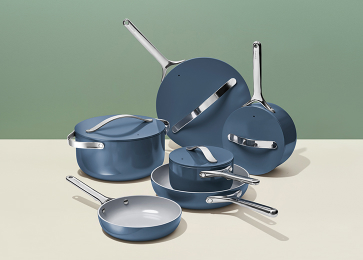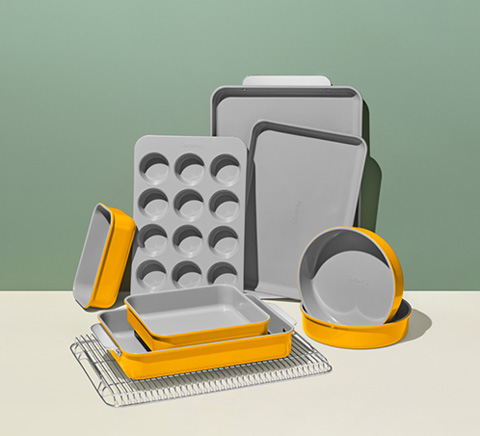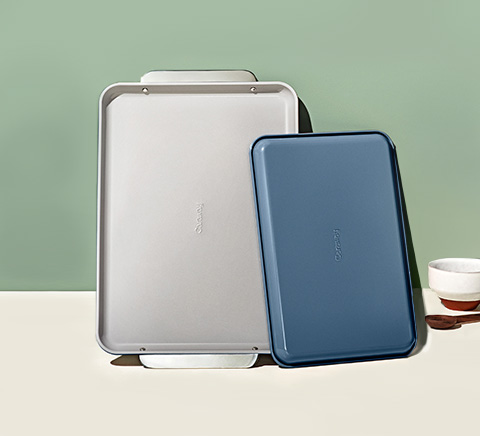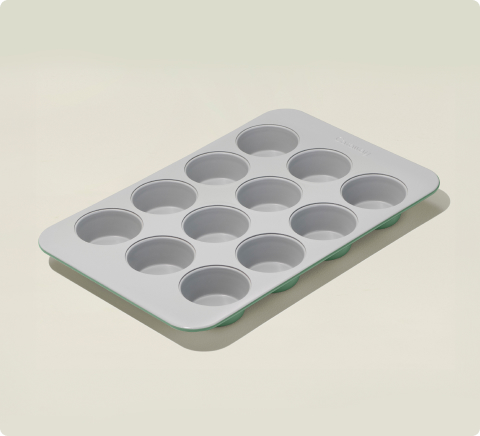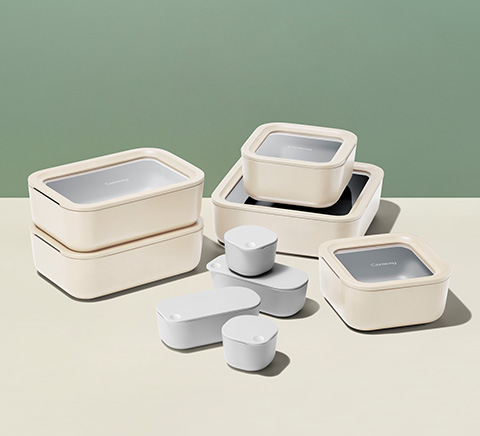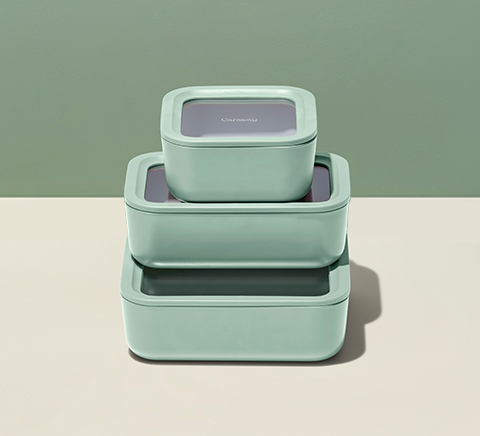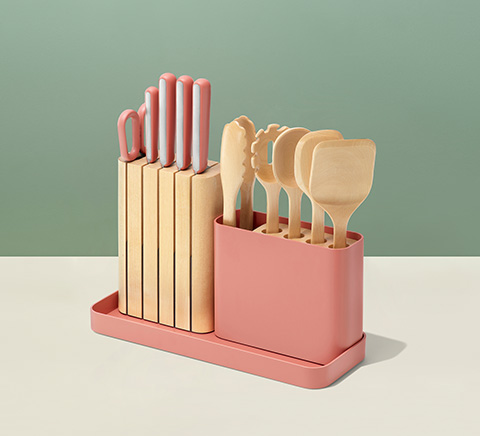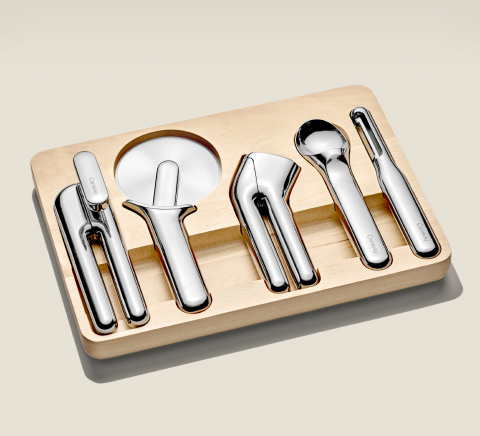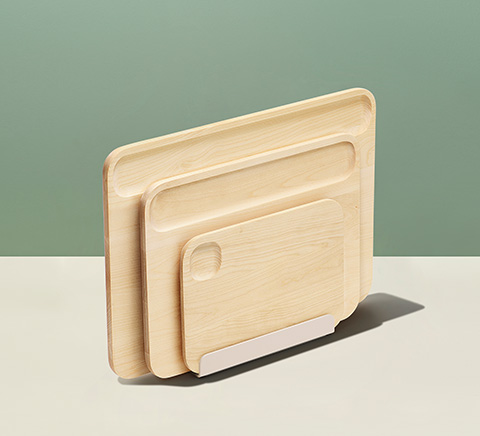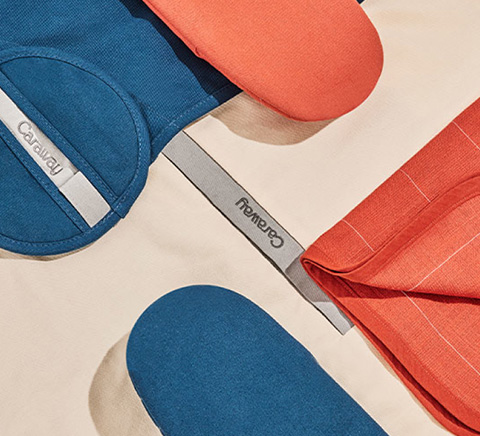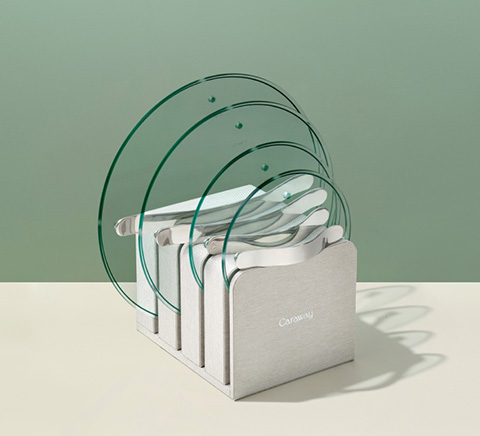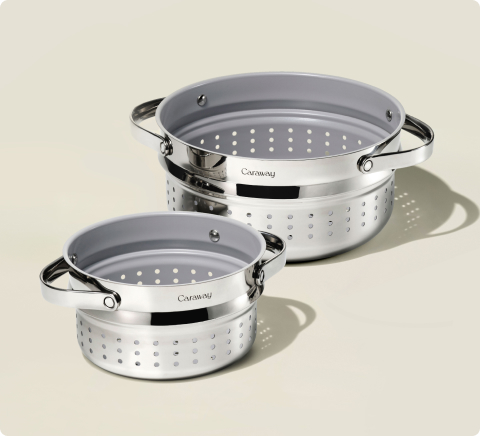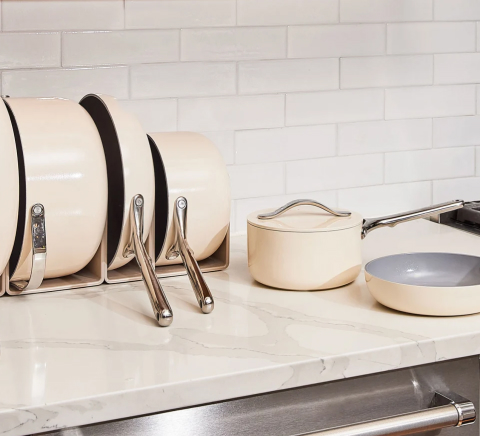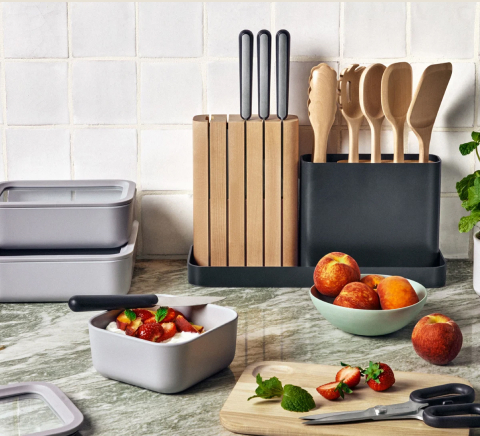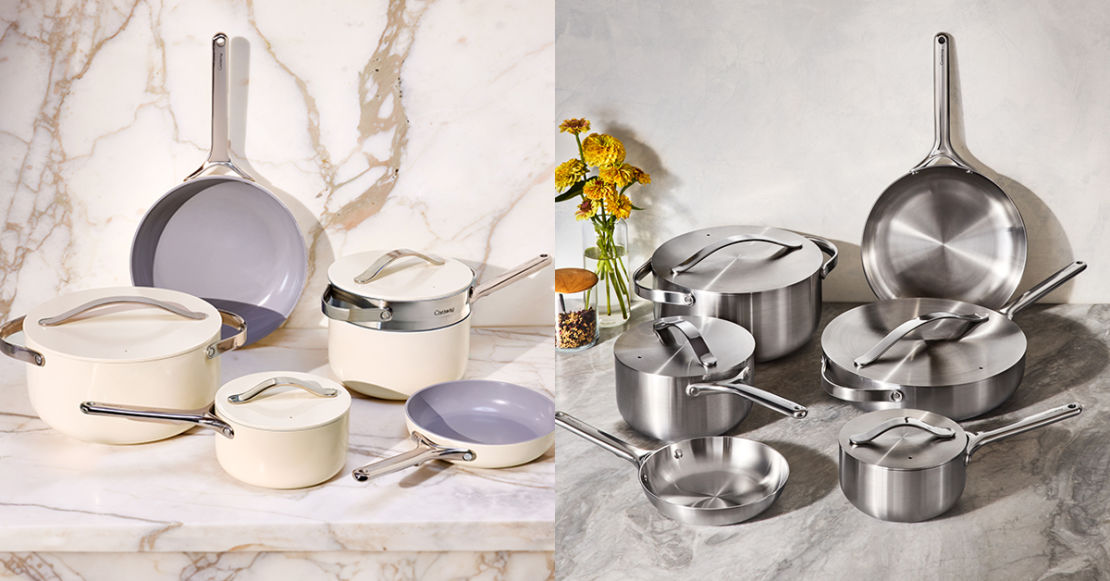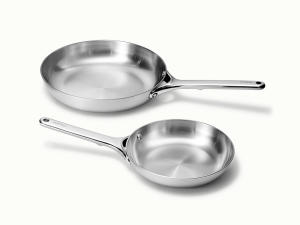Ceramic vs Stainless Steel Cookware: Wondering which is safer or better to cook with? Find out which type of cookware will best fit your kitchen and lifestyle while offering the most benefits.
You made the switch to healthy cooking oils, incorporated more veggies into your culinary creations, and ditched your Teflon pans. The only thing that’s missing for your best health is to choose your new cookware.
Although both ceramic and stainless steel are popular (and healthy) options for cooking, there are pros and cons to each choice.
Read on to discover how stainless steel differs from ceramic cookware and which option you should go with for your unique kitchen needs.
What Is Stainless Steel Cookware?
Stainless steel is a well-known material for cookware, but there’s more to it than meets the eye. You might be surprised to learn that it’s not actually a metal but an alloy—a mixture of metals.
Stainless steel takes on its stainless properties because it contains nickel and chromium, which create a remarkable resistance to corrosion and heat. Since stainless steel is not the best conductor of heat on its own, most stainless steel cookware contains an aluminum core encased between layers of steel called “plys”.
This construction allows the cookware to heat up quickly and evenly distribute heat throughout the pan. Our Stainless Steel Collection is crafted from 5-ply steel, which means that it is more durable, effective, and resistant to molding than most pans on the market.
What Is Ceramic Cookware?

While the word ceramic may conjure up heirloom figurines or even ceramic plates for NASA space shuttles for NASA space shuttles, ceramic is so much more than those (already impressive) uses.
Ceramic cookware is well-known for being available in a wide range of colors and for overall looking incredibly pretty. But that’s not all: Ceramic cookware is a kitchen powerhouse that performs seriously well with whatever challenge it’s put up to.
One of the fantastic things about ceramic cookware is that the material is heat and corrosion-resistant, which has a variety of benefits when it comes to cooking.
Although ceramic cookware is quickly picking up in popularity, there are some misconceptions surrounding it.
Here are three of the most popular myths surrounding this type of cookware:
Ceramic Myth #1: It Doesn’t Last Long
Because of the association that some may have with ceramic figurines, it may seem like this type of cookware won’t last long. While it’s possible to damage ceramic—as is the case with any type of cookware—its durability shouldn’t be a problem. Make sure to hand-wash your ceramic cookware using a non-abrasive sponge and to cook with nonmetal kitchen utensils.
Ceramic Myth #2: All Non-Stick Coatings Are Harmful
We know that the chemicals in Teflon cookware are harmful when exposed to high heat. But ceramic cookware is an all-natural alternative to Teflon and does not have any toxic ingredients, which makes it completely safe for your health.
Ceramic Myth #3: I Can’t Use Ceramic Cookware For Many Things
It may seem like ceramic cookware has to be handled with caution, but it’s actually an incredibly versatile type of cookware. You can use ceramic cookware for making basically whatever you want, such as a baked casserole, a pan-seared steak, or a slow-cooked stew.
Ceramic Cookware vs. Stainless Steel: Which One is Better?
With a good overview of ceramic and stainless steel cookware, let’s get right to the heart of the matter: deciding which type of cookware is best for you.
Here is how the two stack up in five major categories:
1. Toxicity
Both stainless steel and ceramic cookware are free of the same chemicals that are in Teflon cookware, making them both great options for investing in a new set of non-toxic cooking surfaces.
However, it is worth noting that many products claim to be stainless steel but not all stainless steel is created equally. It is essential to check the label to ensure that it is constructed of high grade materials and free from toxic non-stick coatings.
2. Cleaning & Maintenance
There’s a reason why our nonstick ceramic is such a hit. After all, cleaning it is as easy as wiping it off with a sponge and a splash of water. To best clean your ceramic cookware, use a non-abrasive sponge and warm (but not hot), soapy water. With ceramic cookware, you’ll be able to cook eggs, rice, and even foods that can stain your cookware without ever having to worry about cleanup after.
Stainless steel, however, is not a non-stick surface. The surface of a stainless steel pan is made up of tiny pores that expand and contract when the pan heats up and cools down, which is why we recommend waiting for the pan to heat up properly before adding in any fats to prevent the food from sticking. Stainless steel will always require a bit more effort to clean than ceramic, but by utilizing the proper techniques, you can avoid having to do any serious scrubbing.
3. Durability

No non-stick will last forever, but with delicate care and cleaning, our Ceramic Cookware can last for years. Although we recommend that you avoid using metal utensils on either cooking surface, it is worth noting that unlike ceramic, stainless steel is much less susceptible to dents and scratches. Our Stainless Steel Collection is built to last and even comes with a limited lifetime warranty.
4. Versatility & Cooking
Infamously, stainless steel cookware can be used for almost any purpose. Unlike cast-iron, copper, and aluminum pans, it won’t react with acidic foods, plus it’s ideal for cooking at higher temperatures so you can sizzle and saute away to your heart’s content.
Our Ceramic Cookware Set uses a naturally slick non-stick surface that makes it perfect for cooking at home with ease, and can be particularly attractive to those who are less experienced in the kitchen. It is best utilized on low to medium heat, and is considered oven-safe up to 550ºF.
5. Appearance & Feel
Which cookware you’ll find more attractive largely depends on your personal taste.
In all your favorite classic Caraway Cookware shapes, our Stainless Steel Collection will bring a timeless sparkle to your stovetop. It’s sleek, easy to maintain, and incredibly lightweight, allowing you to move throughout the kitchen without a care.
Our Ceramic Cookware Set is Instagram-famous for a reason. It comes in a variety of classic and iconic colors, which creates an opportunity for a bit more creative expression throughout the styling of your home. For example, Sage shines in bohemian kitchens, whereas Perracotta looks fantastic in more rustic spaces.
Tips For Taking Care of Your Ceramic Cookware
-
Let It Cool Down: Throwing a hot pan into the sink can undermine the durability of your cookware (and this goes for any material). For this reason, it’s a good idea to let your ceramic cookware cool down a bit after cooking and only then to put it in water.
-
Try to Hand Wash It: Throwing your cookware in the dishwasher is incredibly convenient. That said, the high amount of heat can potentially be damaging, which is why we only hand wash our ceramic cookware.
But because ceramic cookware is non-stick, handwashing should be a breeze, requiring a few seconds of your time with the help of warm water and just a dash of dish soap.
- Use Gentle Cooking Tools: Anything abrasive such as metal spatulas, should be avoided as they can scratch up the ceramic coating. One great option is to stick to silicone utensils. Or, if you prefer an all-natural material, wood is always a solid choice.
The Choice Is Yours
All in all, it seems like ceramic is up to the same challenges as stainless steel.
Our Sources:
The 10 Healthiest and Least Healthy Oils to Cook With | Time
9 Mistakes You’re Making with Stainless Steel Cookware | Reader's Digest
